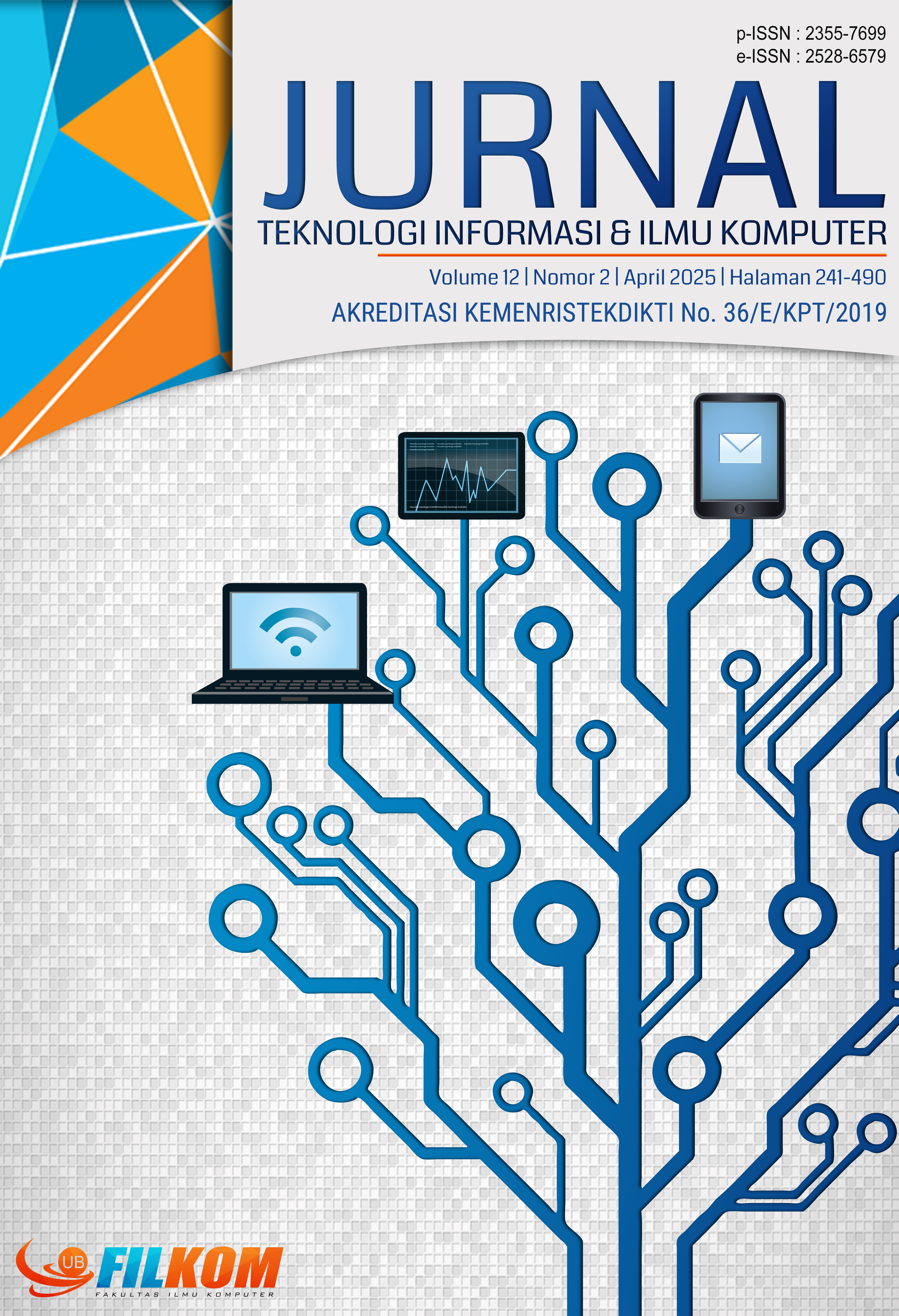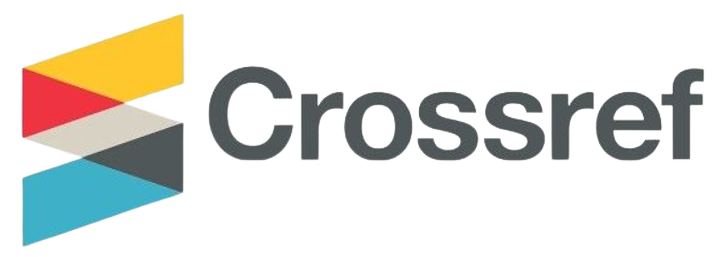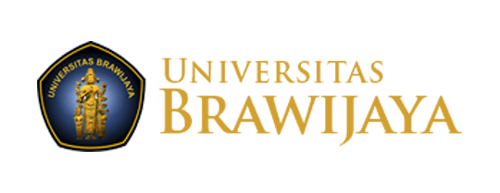Kombinasi Analisis Bibliometrik dengan Latent Dirichlet Allocation sebagai Pemodelan Topik Cashless Society
DOI:
https://doi.org/10.25126/jtiik.2012129244Kata Kunci:
Big data, Cashless Society, Bibliometric, latent Dirichlet AllocationAbstrak
Era digitalisasi dan komputasi telah dimulai, ditandai dengan munculnya teknologi digital yang merasuk ke berbagai aspek kehidupan, sementara data juga terus berkembang menjadi big data. Setelah era covid 19, metode pembayaran non-tunai berkembang sangat pesat, sehingga banyak penelitian mengenai cashless society. Tujuan dari penelitian ini adalah memodelkan topik-topik yang berkaitan dengan cashless society untuk mendapatkan variabel dan indikator yang terkait dengan menggunakan analisis bibliometrik dan latent dirichlet allocation. Data penelitian ini berasal dari artikel publikasi ilmiah dan hasil web scrapping di twitter yang bertemakan cashless society. Hasil penelitian menunjukkan bahwa terdapat 5 variabel dan 21 indikator yang berhubungan dengan cashless society.
Abstract
The era of digitalization and computing has begun, marked by the emergence of digital technology which permeates various aspects of life, while data also continues to develop into big data. After the covid 19 era, non-cash payment methods developed very rapidly, so there were many studies on the cashless society. The purpose of this research is to model topics related to the cashless society to obtain related variables and indicators using bibliometric analysis and latent dirichlet allocation. This research data comes from scientific publication articles and web scrapping results on twitter with the theme of cashless society. The results showed that there are 5 variables and 21 indicators related to cashless society.
Downloads
Referensi
BLEI, D. M., NG, A. Y., & JORDAN, M. I. 2003. Latent Dirichlet Allocation. Journal of Machine Learning Research, 3, 993–1022.
CHAPAGAIN, A. 2019. Hands-On Web Scraping with Python: Perform advanced scraping operations using various Python libraries and tools such as Selenium, Regex, and others. Packt Publishing Ltd.
EZAMA-NICOLÁS, R 2018. A Bibliometric Method for Assessing Technological Maturity: The Case of Additive Manufacturing. Scientometrics,117(3), 1425–1452.
FEINERER, I., HORNIK, K., & MEYER, D. 2008. Text Mining Infrastructure in R. Journal of Statistical Software, 25(5). https://doi.org/10.18637/jss.v025.i05
GARBHAPU, V. K., & BODAPATI, P. 2020. A comparative analysis of Latent Semantic analysis and Latent Dirichlet allocation topic modeling methods using Bible data. Indian Journal of Science and Technology, 13(44), 4474-4482.
HAN, J., TONG, H., & TONG, H. 2022. Data mining: concepts and techniques. Cambridge: Morgan kaufmann.
KALEPALLI, Y., TASNEEM, S., TEJA, P. D. P., & MANNE, S. 2020. Effective comparison of LDA with LSA for topic modelling. In 2020 4th International conference on intelligent computing and control systems (ICICCS) (pp. 1245-1250). IEEE.
RÖDER, M., BOTH, A., & HINNEBURG, A. 2015. Exploring the Space of Topic Coherence Measures. Proceedings of the Eighth ACM International Conference on Web Search and Data Mining, 399–408. https://doi.org/10.1145/2684822.2685324
ROSEN-ZVI, M., GRIFFITHS, T., STEYVERS, M., & SMYTH, P. 2012. The Author-Topic Model for Authors and Documents.
VAN KLAVEREN, C., & DE WOLF, I. 2019. Systematic Reviews in Education Research: In Contemporary Economic Perspectives in Education. https://doi.org/10.2307//j.ctt14jxsqg.4
YANG, L., SUN, Y., & LIU, Z. 2013. A Bibliometric Investigation of Research Trends in Computational Simulation for Engineering. Scientometrics, 95(2), 529-546. doi:10.1007/s11192-012-0872-z
YULIANTI, N., ULPAWATI, U., & SUSANTI, S. 2022. Analisis Bibliometrik Determinan Kejadian Stunting Pada Balita. Jurnal Riset Rumpun Ilmu Kesehatan, 1(2), 120-129.
Unduhan
Diterbitkan
Terbitan
Bagian
Lisensi
Hak Cipta (c) 2025 Jurnal Teknologi Informasi dan Ilmu Komputer

Artikel ini berlisensiCreative Commons Attribution-ShareAlike 4.0 International License.

Artikel ini berlisensi Creative Common Attribution-ShareAlike 4.0 International (CC BY-SA 4.0)
Penulis yang menerbitkan di jurnal ini menyetujui ketentuan berikut:
- Penulis menyimpan hak cipta dan memberikan jurnal hak penerbitan pertama naskah secara simultan dengan lisensi di bawah Creative Common Attribution-ShareAlike 4.0 International (CC BY-SA 4.0) yang mengizinkan orang lain untuk berbagi pekerjaan dengan sebuah pernyataan kepenulisan pekerjaan dan penerbitan awal di jurnal ini.
- Penulis bisa memasukkan ke dalam penyusunan kontraktual tambahan terpisah untuk distribusi non ekslusif versi kaya terbitan jurnal (contoh: mempostingnya ke repositori institusional atau menerbitkannya dalam sebuah buku), dengan pengakuan penerbitan awalnya di jurnal ini.
- Penulis diizinkan dan didorong untuk mem-posting karya mereka online (contoh: di repositori institusional atau di website mereka) sebelum dan selama proses penyerahan, karena dapat mengarahkan ke pertukaran produktif, seperti halnya sitiran yang lebih awal dan lebih hebat dari karya yang diterbitkan. (Lihat Efek Akses Terbuka).














